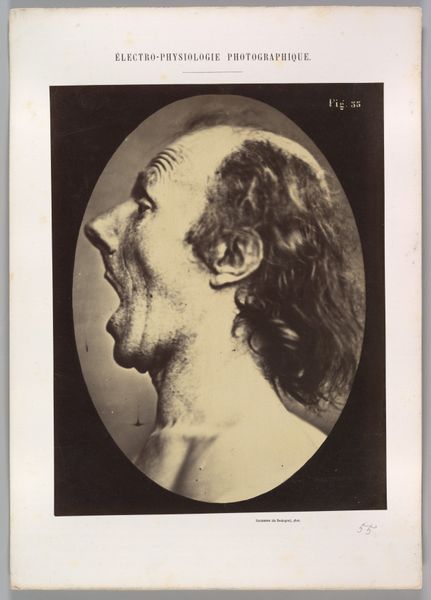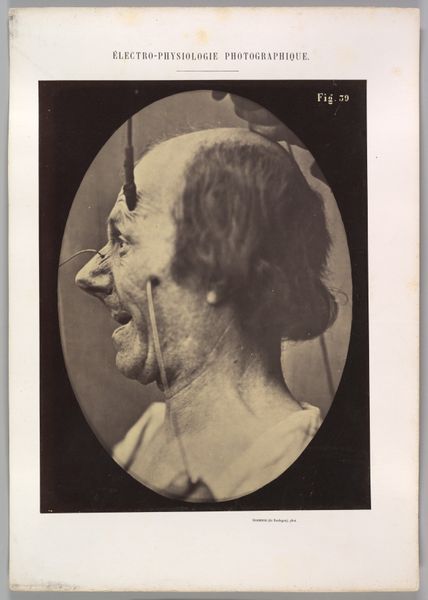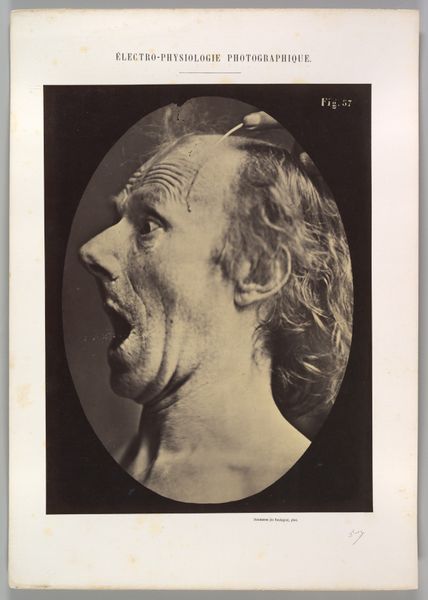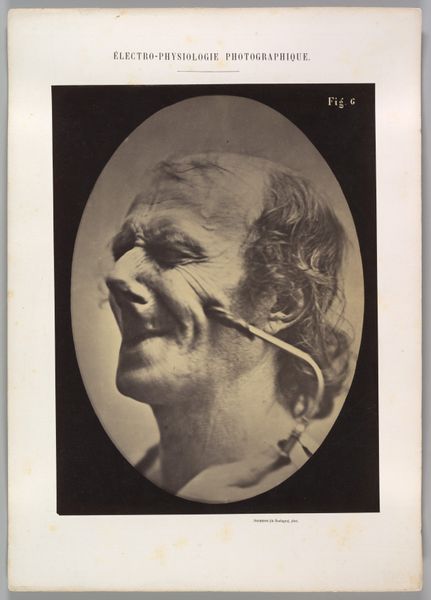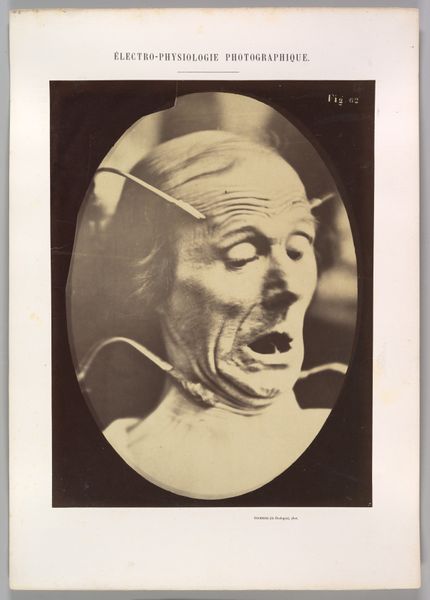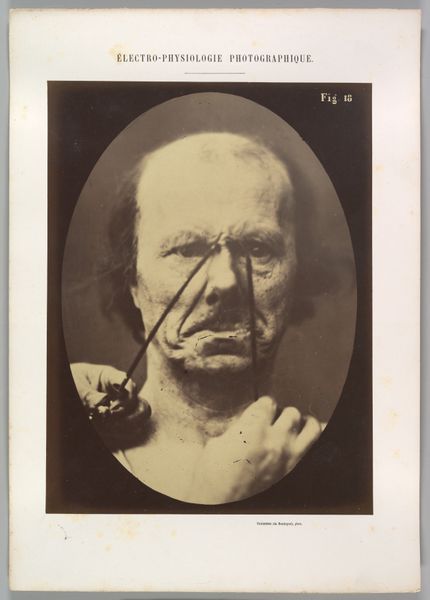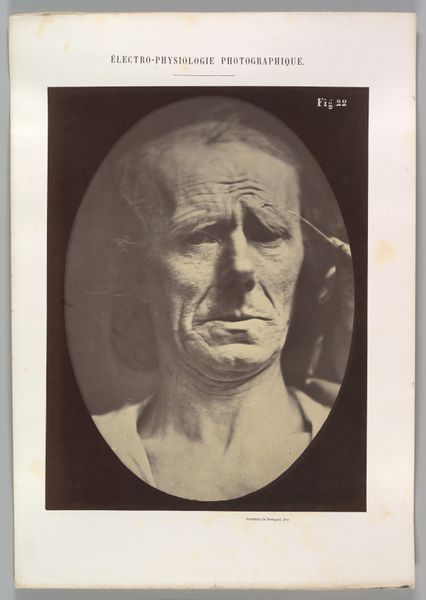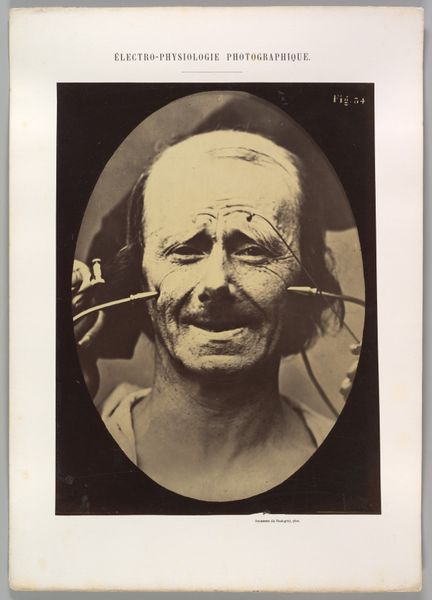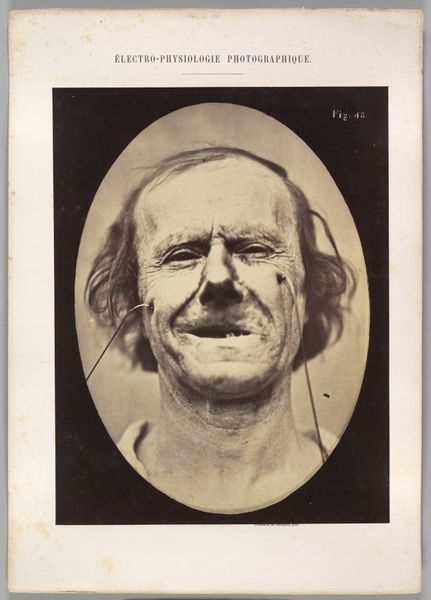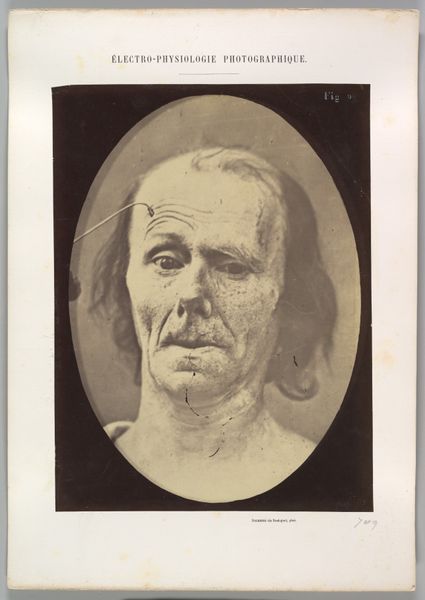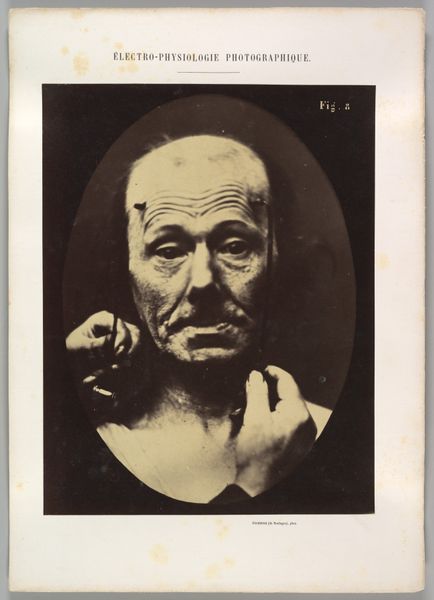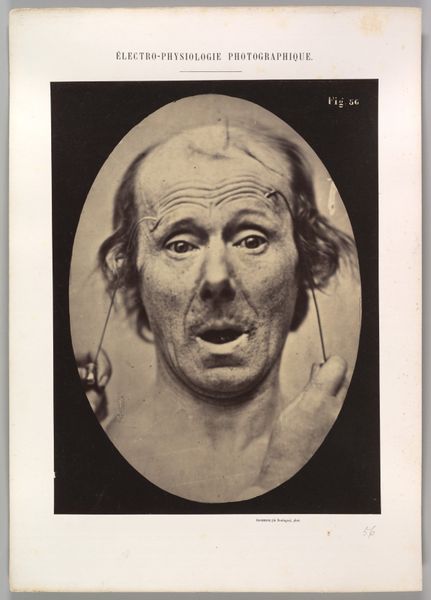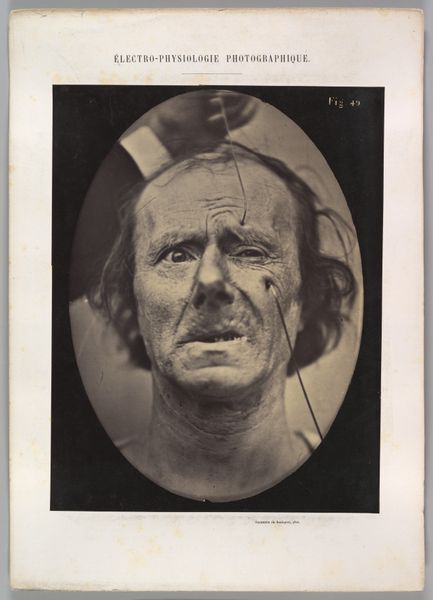
Figure 63: Expression of terror 1854 - 1856
0:00
0:00
daguerreotype, photography
#
portrait
#
daguerreotype
#
photography
#
men
#
portrait drawing
#
history-painting
#
academic-art
#
realism
Dimensions: Image (Oval): 28.2 × 20.3 cm (11 1/8 × 8 in.) Sheet: 29.5 × 22.2 cm (11 5/8 × 8 3/4 in.) Mount: 40.3 × 28.5 cm (15 7/8 × 11 1/4 in.)
Copyright: Public Domain
This is a photograph of a man experiencing terror, made in France by Guillaume Duchenne in the mid-19th century. Duchenne was interested in the science of facial expression, particularly how our muscles reveal our inner emotions. But what does it mean to scientifically document an emotion? In the 19th century, when asylums were overflowing and new theories of degeneration were emerging, the ability to identify and categorize emotions was seen as crucial for understanding the human mind. Duchenne’s photographs, which often involved the use of electric stimulation to elicit specific expressions, reflect the cultural obsession with mapping the body and mind. Notice the technological apparatus attached to the man's face: this image reveals the clinical and institutional context in which it was made. By examining medical and scientific texts from the period, we can better understand how Duchenne's work contributed to the scientific and cultural understanding of emotions in 19th-century France. The meaning of art is always contingent on social and institutional context.
Comments
No comments
Be the first to comment and join the conversation on the ultimate creative platform.
